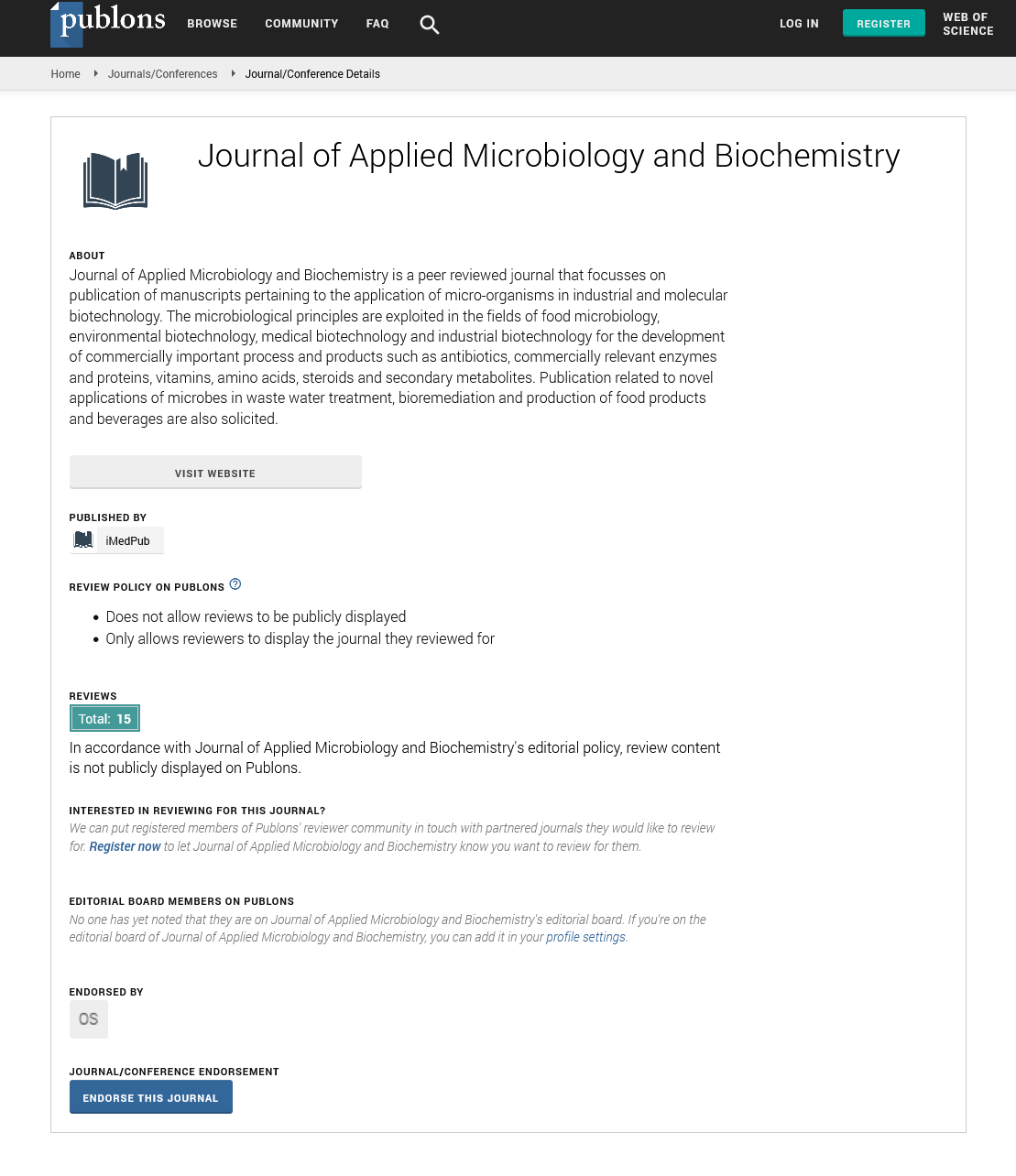ISSN : ISSN: 2576-1412
Journal of Applied Microbiology and Biochemistry
Abstract
The Role of Proteins and Lipids in Cellular Communication
Cellular communication is a fundamental of life, enabling cells to coordinate their functions, respond to environmental stimuli and maintain homeostasis. At the heart of this complex network are proteins and lipids, which interact dynamically to regulate signaling pathways, membrane structure and intracellular transport. Understanding the interplay between proteins and lipids offers valuable insights into cellular processes and provides a foundation for therapeutic advancements. This article describes the role of protein-lipid interactions in cellular communication, focusing on their structural roles, signaling functions and implications for health and disease. The cell membrane, composed primarily of a lipid bilayer interspersed with proteins, serves as a physical boundary and a communication hub. Proteins and lipids work together to shape the membrane's structure and functionality, enabling dynamic cellular processes. Lipids in the bilayer are not uniformly distributed but form microdomains, often referred to as lipid rafts. These rafts are enriched with cholesterol, sphingolipids and specific proteins, creating platforms for signaling and trafficking. Proteins within these rafts are anchored by lipid modifications, such as prenylation or Glycosylphosphati- dylinositol (GPI) anchors, ensuring their precise localization and function. Certain proteins interact with lipids to induce or stabilize membrane curvature, a critical feature in processes like endocytosis, exocytosis and organelle formation. For example, BAR domain-containing proteins bind to curved membrane surfaces, while phosphoinositides regulate vesicle formation and trafficking. Transmembrane proteins, such as integrins and cadherins, interact with specific lipids to provide structural integrity and mediate cell adhesion. These interactions are in need for maintaining tissue architecture and enabling cells to communicate through direct contact. By modulating membrane structure and composition, protein-lipid interactions create a dynamic environment that supports cellular communication and functionality.
Author(s): Patrick Jung
Abstract | PDF
Share This Article
Google Scholar citation report
Citations : 342
Journal of Applied Microbiology and Biochemistry received 342 citations as per Google Scholar report
Journal of Applied Microbiology and Biochemistry peer review process verified at publons
Abstracted/Indexed in
- Google Scholar
- China National Knowledge Infrastructure (CNKI)
- Cosmos IF
- Directory of Research Journal Indexing (DRJI)
- Publons
- Secret Search Engine Labs
Open Access Journals
- Aquaculture & Veterinary Science
- Chemistry & Chemical Sciences
- Clinical Sciences
- Engineering
- General Science
- Genetics & Molecular Biology
- Health Care & Nursing
- Immunology & Microbiology
- Materials Science
- Mathematics & Physics
- Medical Sciences
- Neurology & Psychiatry
- Oncology & Cancer Science
- Pharmaceutical Sciences
